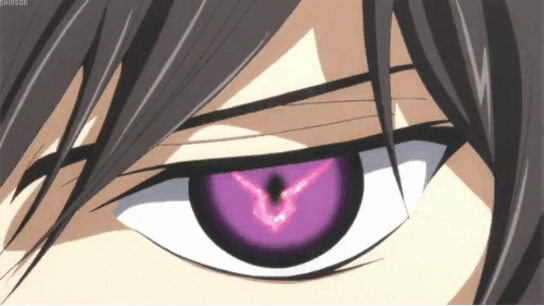When you visit a foreign country, usually the first places to visit are the museums. And believe me when I say that, Belgrade, has so many of them with different thematic each one. There is even an aviation museum, a selfie museum and so on. But this is not a post about them.
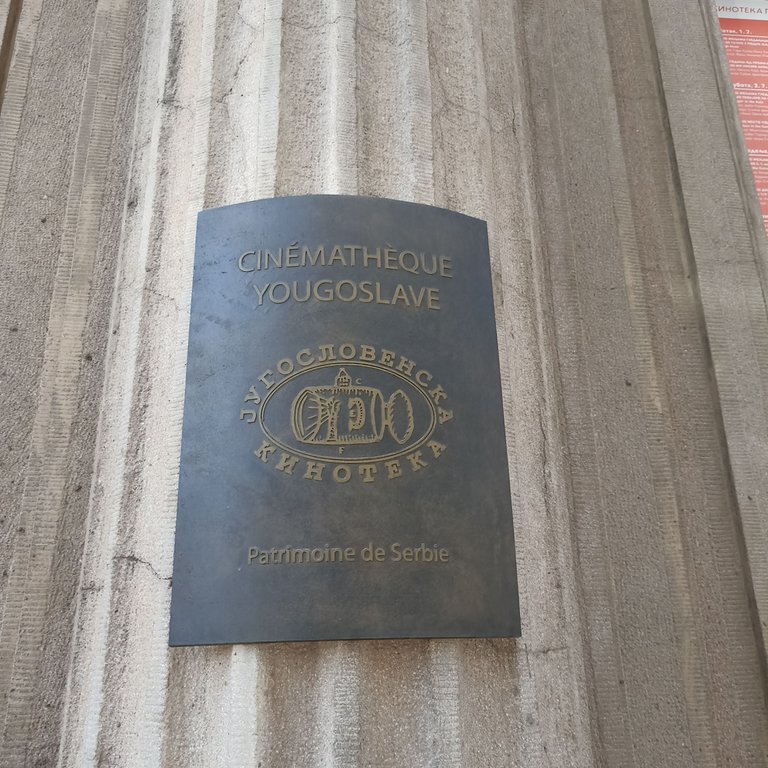
This post is dedicated to Jugoslavenska Kinoteka Musej, the Yugoslav Film Archive Museum that is located in Belgrade, now capital of Serbia. The Jugoslavenska Kinoteka founded in 1949, its aim was to preserve the film production of Yugoslavian film industry and contains almost 100.000 copies of film, some of them were filmed in the beginning of the 19th century.
The museum is small but quite interesting. In the front, apart from the plaque-sign with the name of the museum, there is a real life statue of Karl Malden, the American actor of serbian descedant, climbing a train stair (Very iconic)
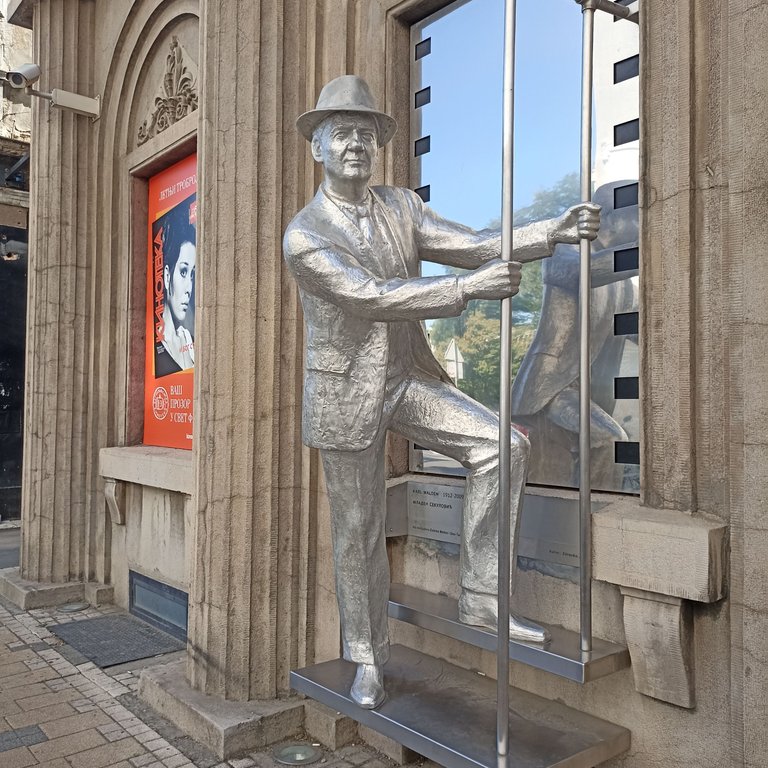
When we got in, the truth is that we didn't know what to expect. The information about this museum were very sparse, and unfortunately the personnel on that day, didn't speak English. But they were very helpful, and seemed very proud for their work and the museum. The employee literally took us by the hand to the basement, to show us, what we presumed, was the pride, the jewel of the museum (but there were more to see). A few of the first mediums of moving pictures watching and predeccessor of film.
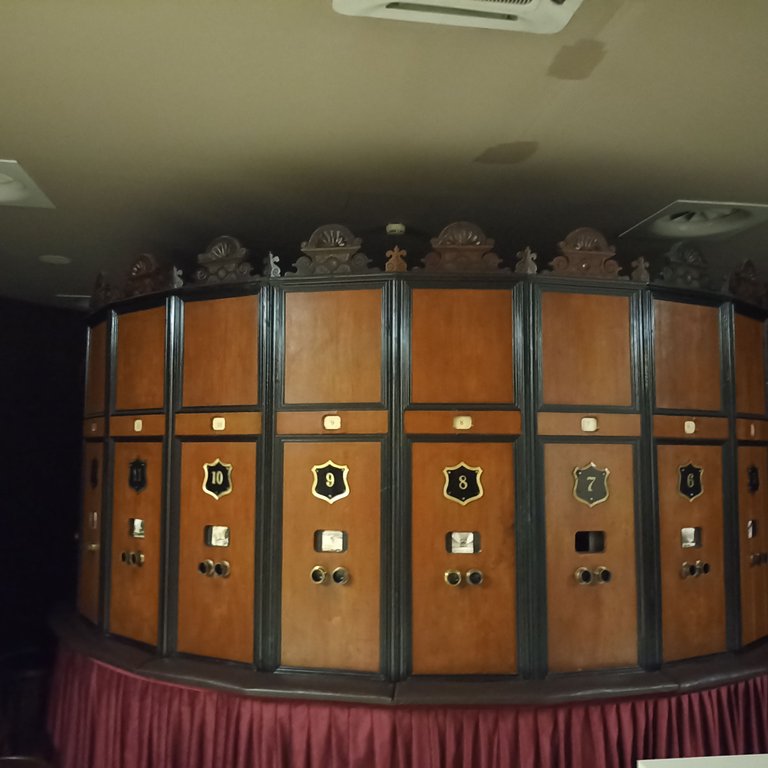
Kaiser-panorama
This was a "Kaiserpanorama", one of the first invention to watch pictures, a predecessor of the cinema. We sat on the stools, put our faces so that we could see through the lenses and in front of us appeared in a row several card postals, that had a 3d feeling (kind of). We saw places like the Versailles, Acropolis, even a 19th century photo of New York. To tell you the truth, because I am shortsighted, it wasn't easy to find the right angle to watch these, but when I found it,boy, I felt an awe. The pictures kept rolling and "travelled" us to past.
Another surprise came, when we saw that one of the exhibits was one of the first models of Edison's cylinder phonograph, that is kept in the museum, along with Edison kinematoscope. Unfortunately, we couldn't see them upclose or if they were still operational, but it is really impressing standing so close from these mediums that lead to filming.
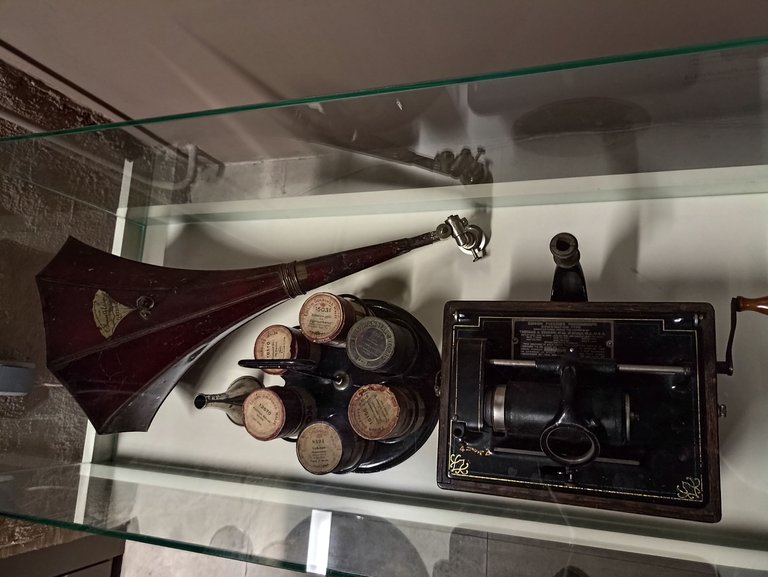
Edison's cylinder phonograph
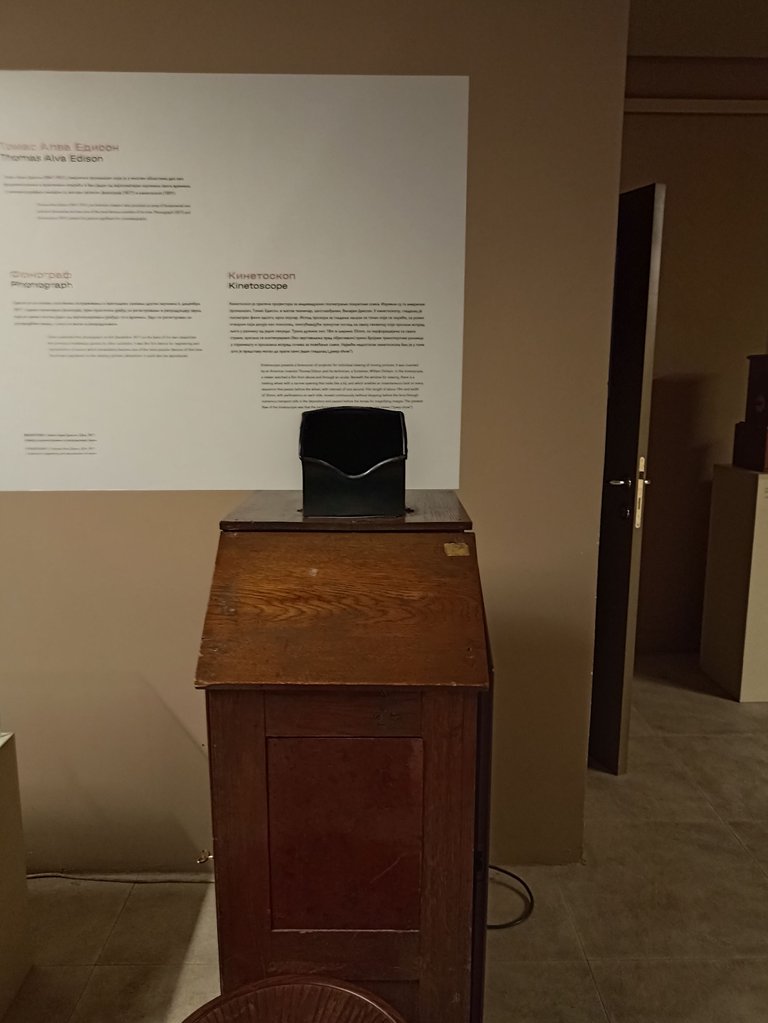
Kinematoscope. The word derives from the verbs "κινώ" and "σκοπώ" that means to move and to watch respectively. So the name is the medium to watch moving (pictures)
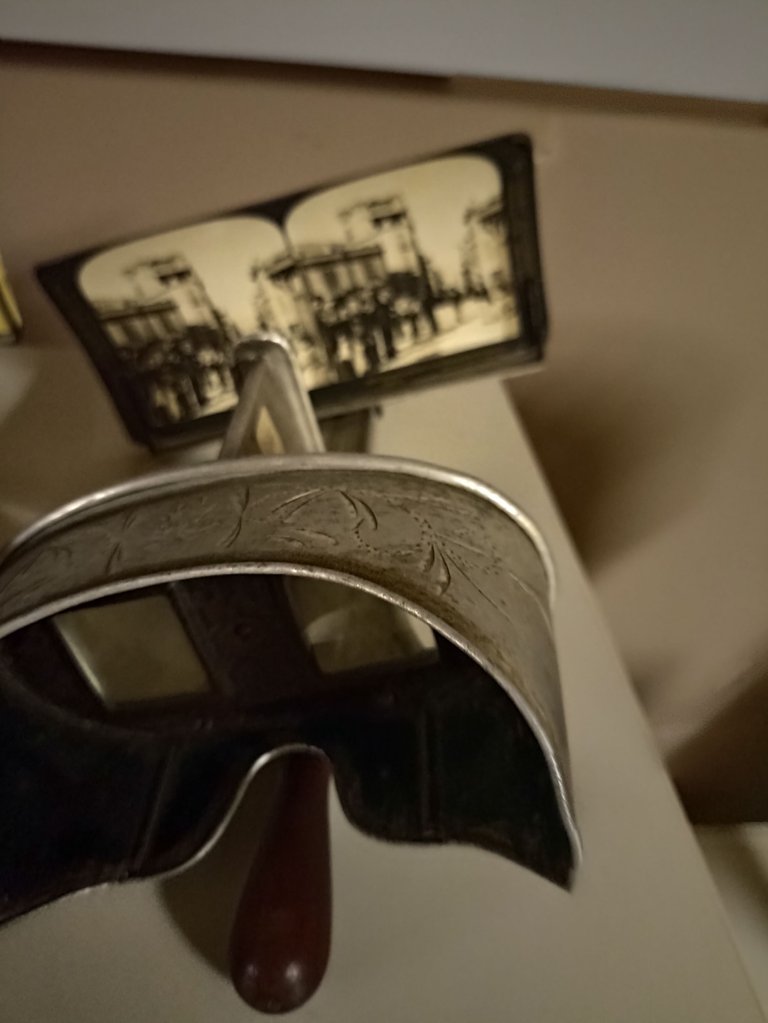
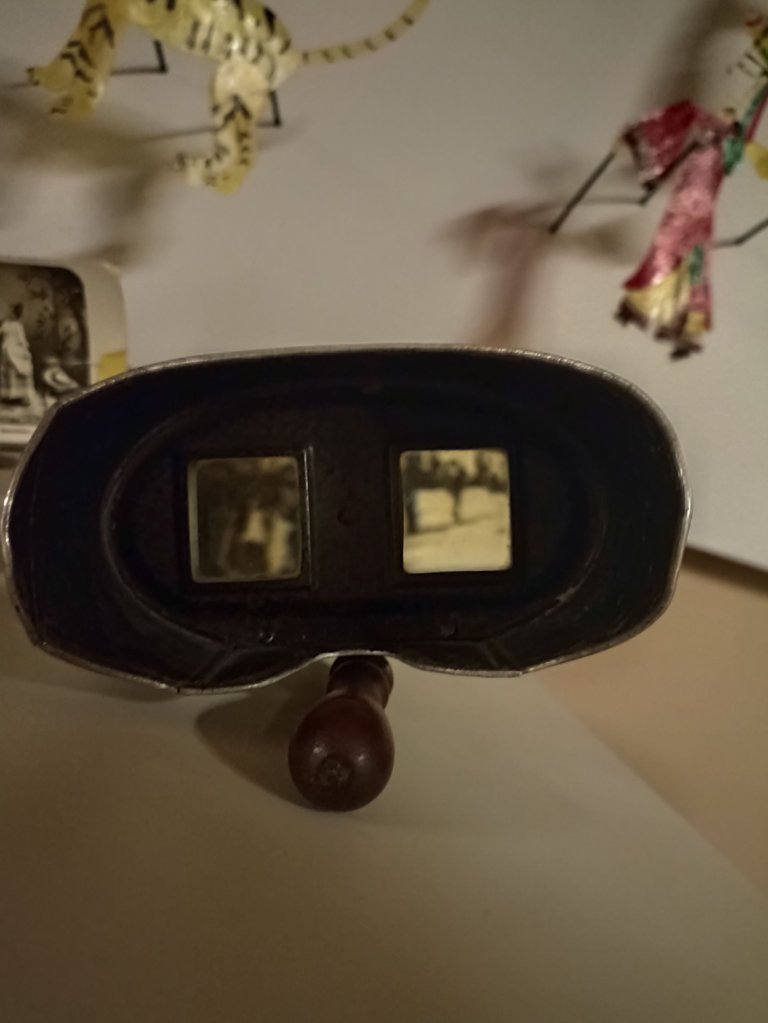
A stereoscope: Right and left eye see the same picture, but with a 3 dimensional sprectre.
And due to the fact that we started from the basement, we didn't get a glimpse of the first floor. So, climbing up the stairs, we were met with many posters of old Serbian movies. The Jugoslavian film industry was very productive from the beginning of the 19th century. Most of them were from Dušan Makavejev, one of the most prominent Serbian directors(I don't know if have watched "Sweet movie", but it was one of the movies that introduced me to surrealist cinema, not to mention that the film's soundtrack was written by Manos Hadjidakis). Among them, were two posters of movies that made a world wide impact when they were released: Underground by Emir Kusturica and Pretty village. pretty flame by Srdjan Dragojevic
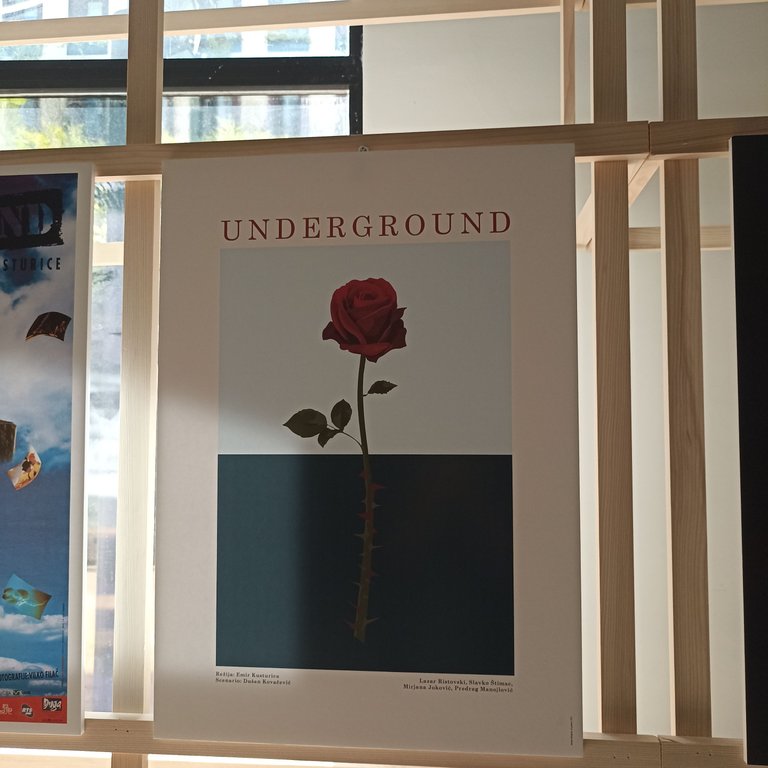
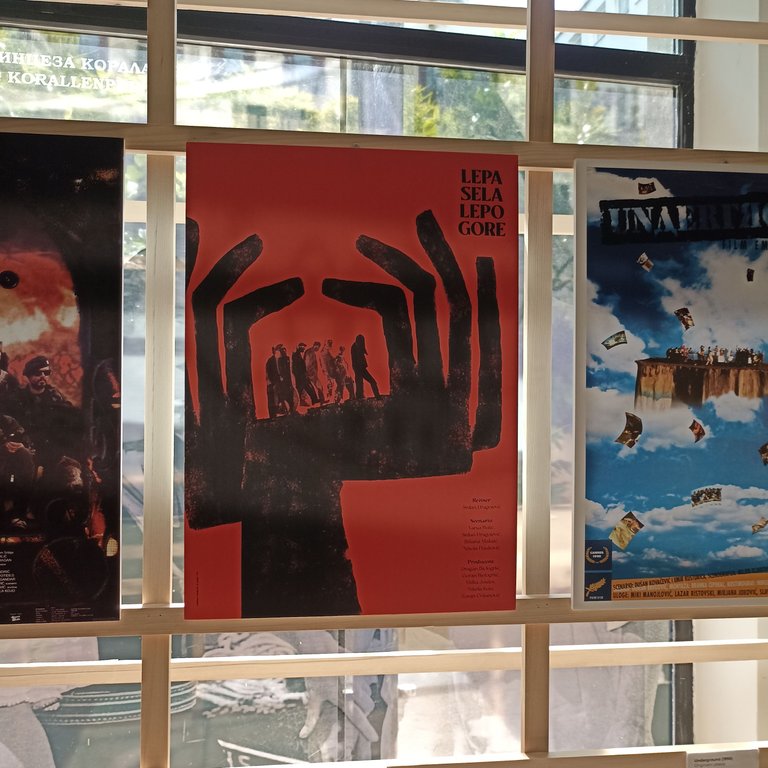
Wandering aroung the first floor (we were unlucky, because there wasn't a guide there to help us, but somehow we found our way) we were met with another surprise. One of the Charlie Chaplin's canes, that he used in his movies were exhibited there. I don't know how it happened to be there, but surely I was impressed.
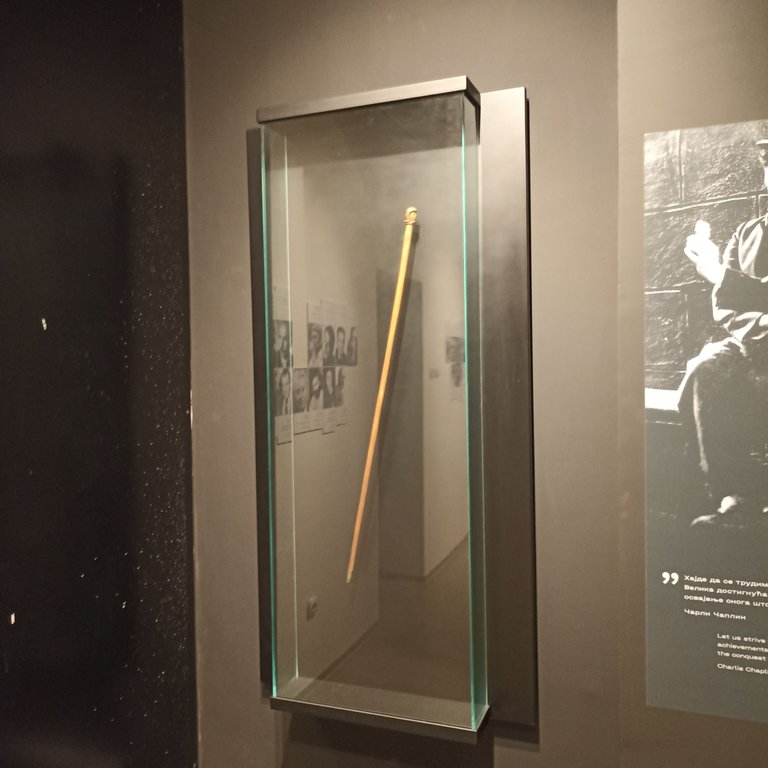

All around the exhibits were mostly memorabilia from serbian actors and directors (Karl Malden was one of them) and many, many cameras and film reels. I loved them. The history of cinema was right in front of me.
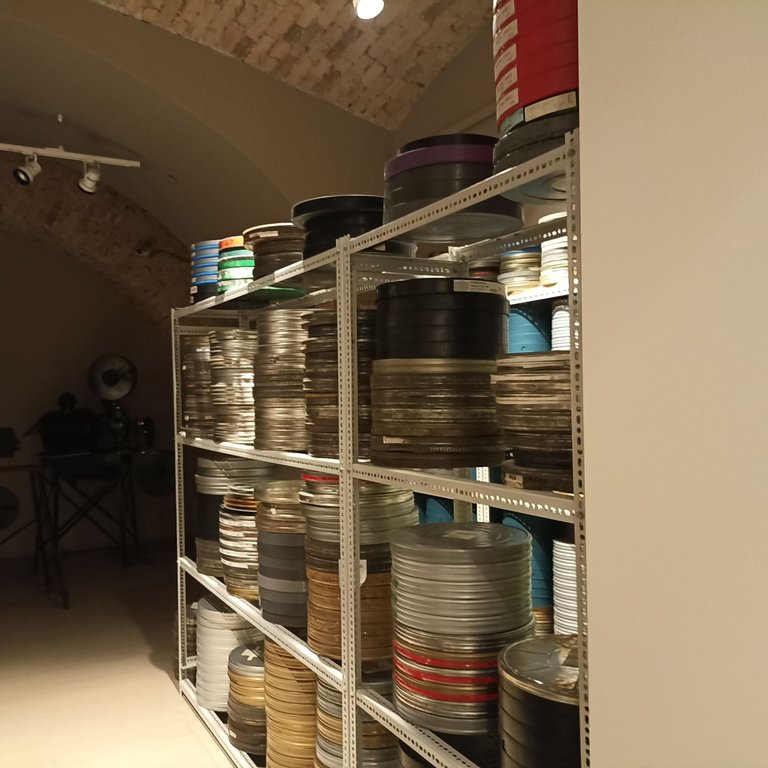
Film reels
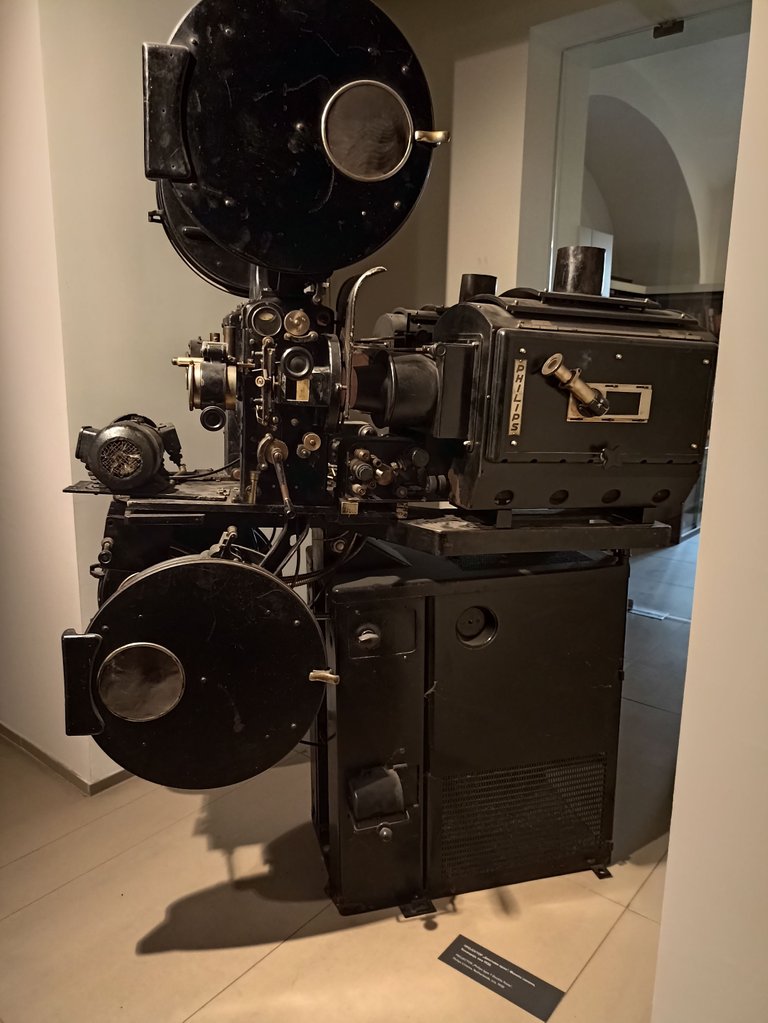
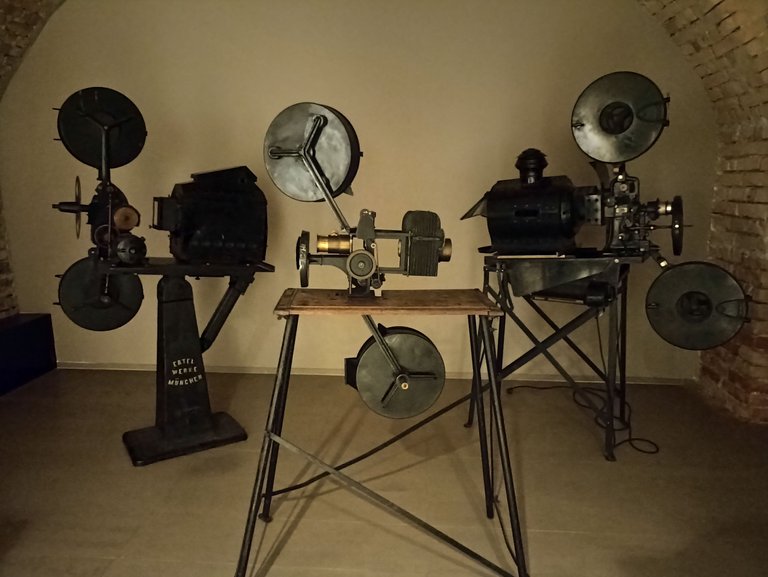
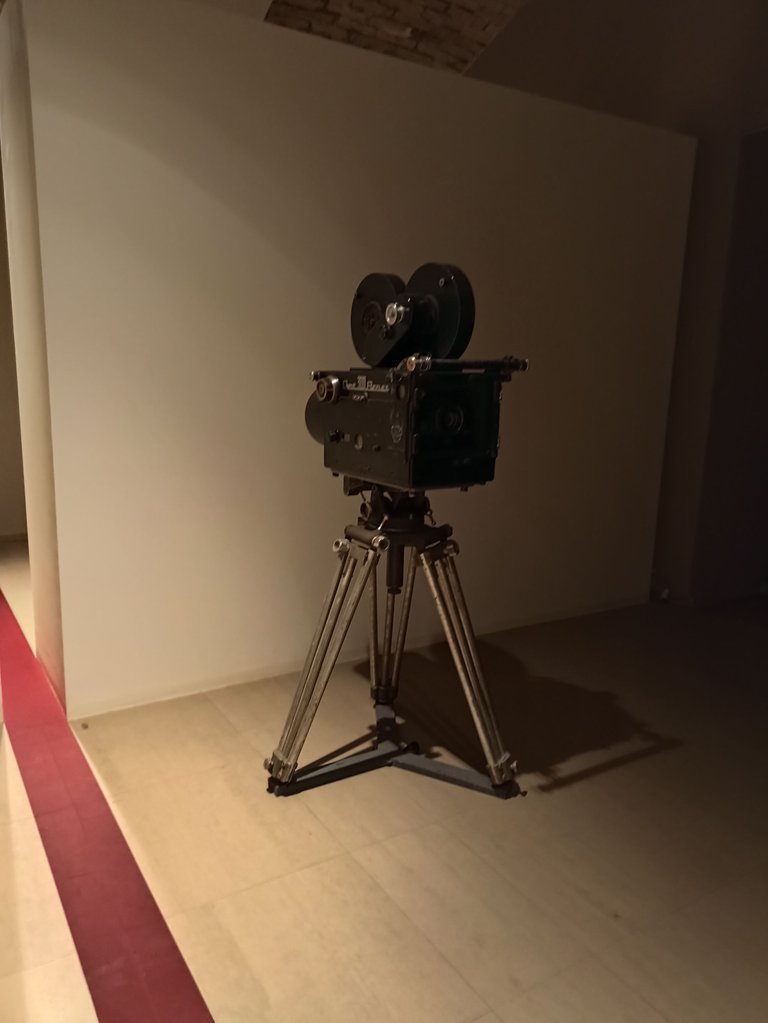

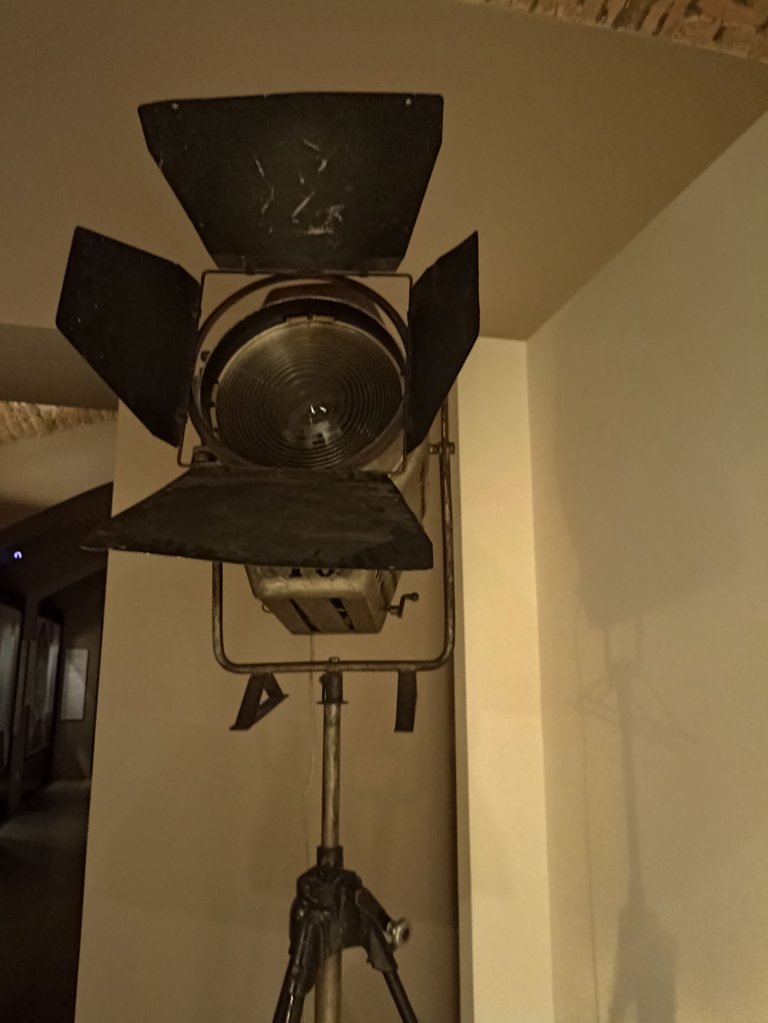
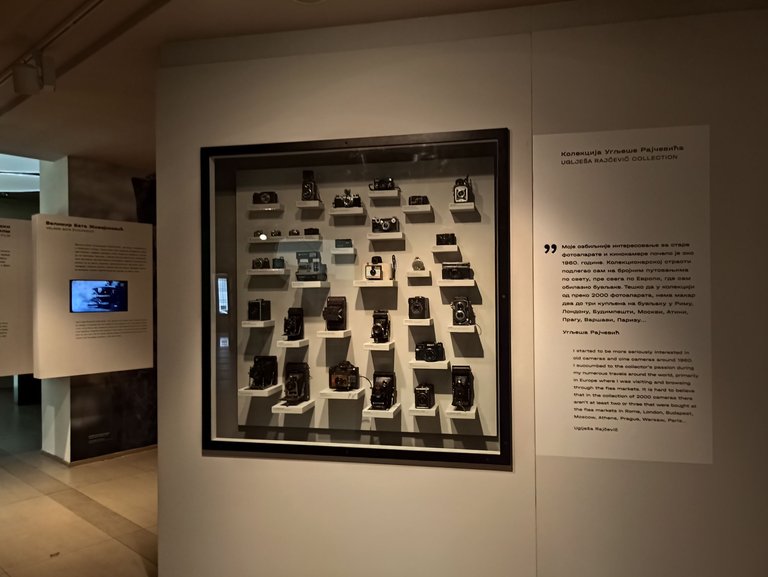
If you look closely, in the second row from the left, there are spy cameras.
At the end, (or maybe it was the beginning of the museum, who knows) the history of Jugoslav cinema unfolded before us. From the first film, in 1905 with the enthronement of the king, to modern cinema. In fact, they showed us in short videos parts of films by famous directors, such as Kusturica.
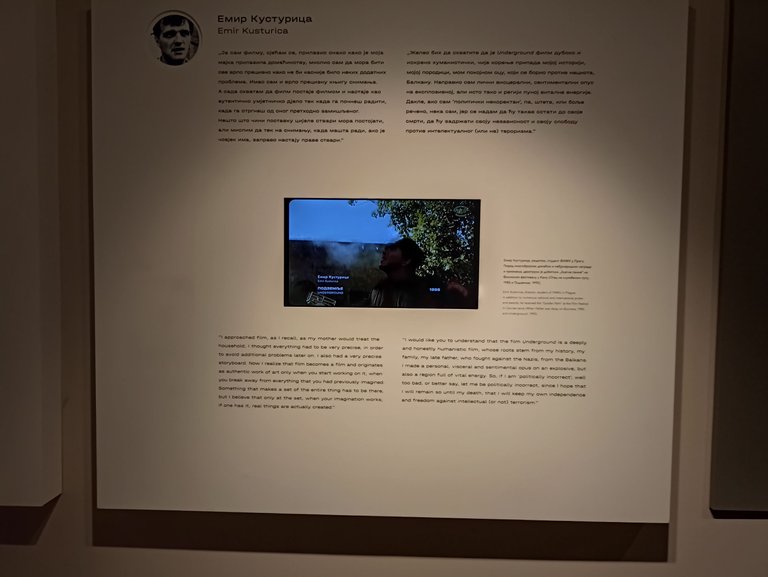
The museum took us about one hour to visit. But this was, beause we were quite thorough about the exhibitions (Film fanatics here!). The entrance fee was also 300 dinars per person (around 2,5 euros).
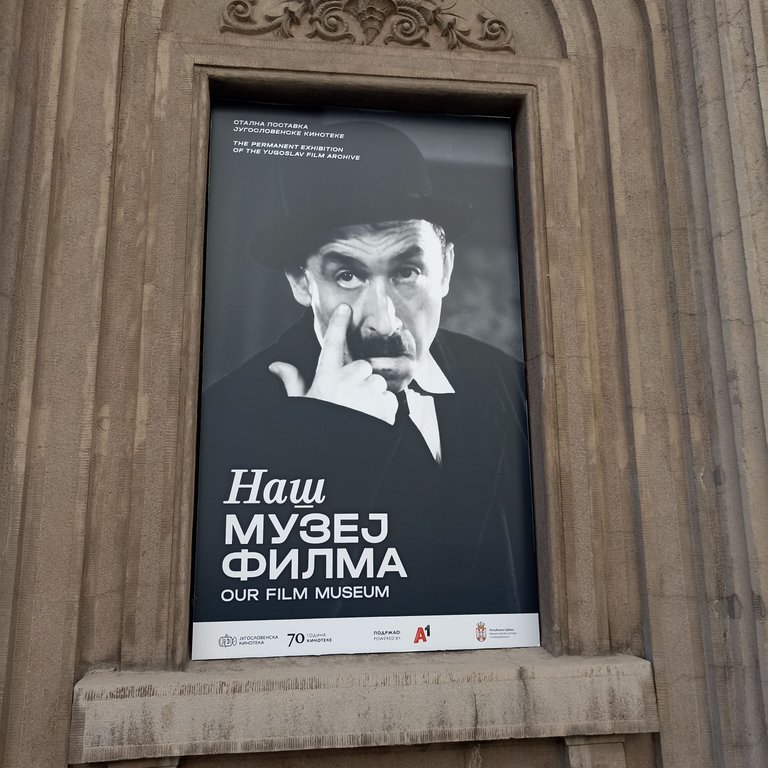
Should I recommend it to someone? If that person is a cinephile or is interested in movies equipments, then YES! But truth to be told, we were the only visitors the whole hour that we were there, (Perhaps the sparsity of information doesn't help it).
But for me, it gave me the feeling of awe. Even though, I couldn't know the whole story behind all the items that were in display, I felt the history around them.
And I loved it.

If someone wants to read more about it, you can check the page in wikipedia (it is generally about the Film Archive) or the official website
Thank you for reading!

All pictures were taken by me with the help of my mobile phone.
